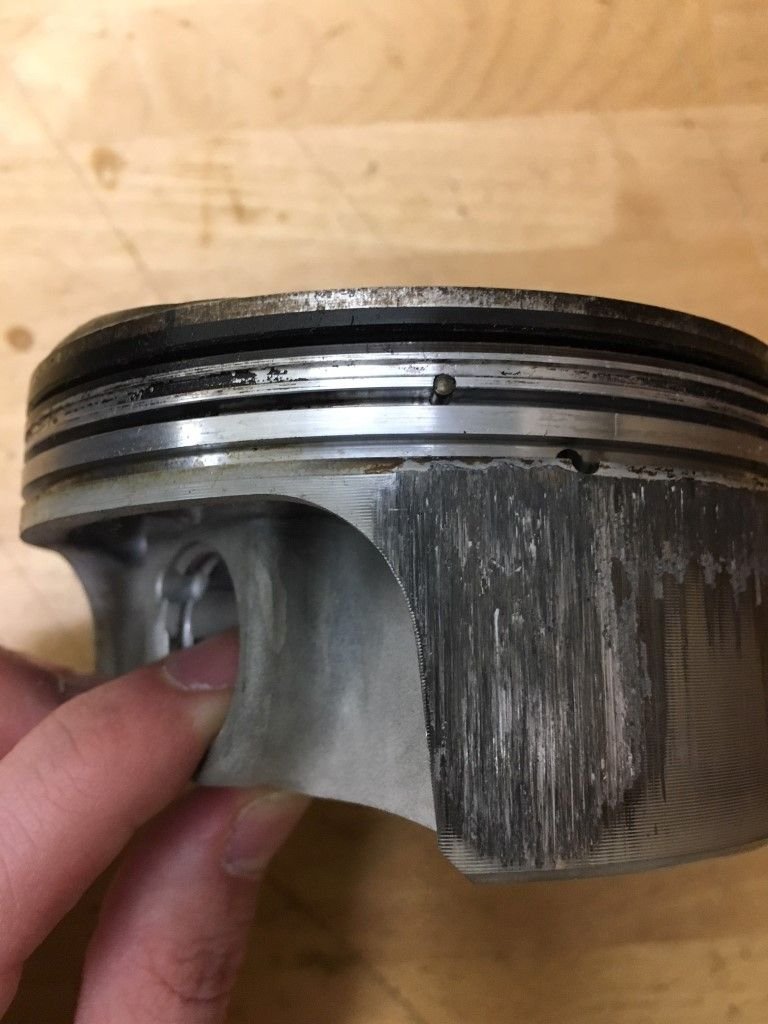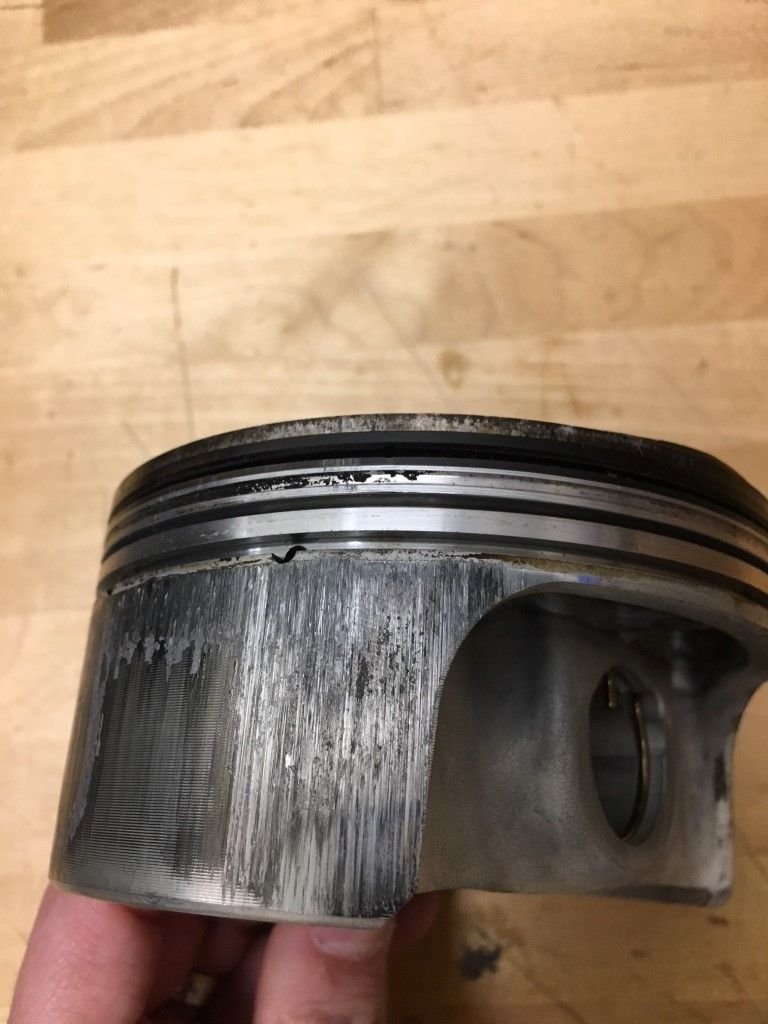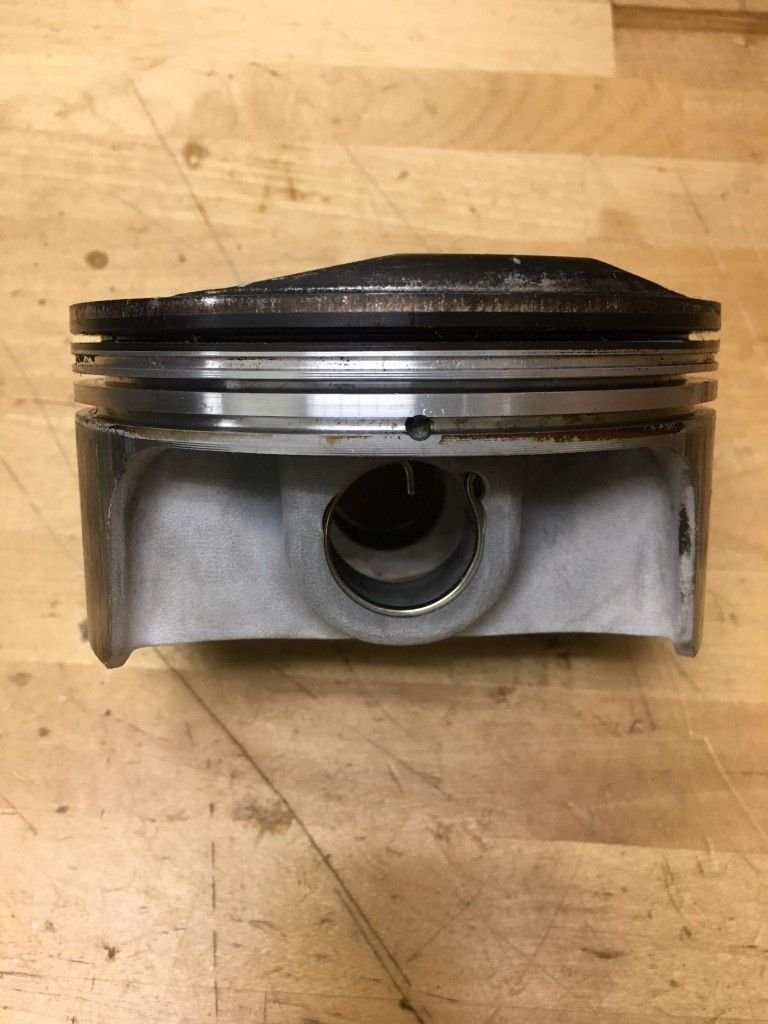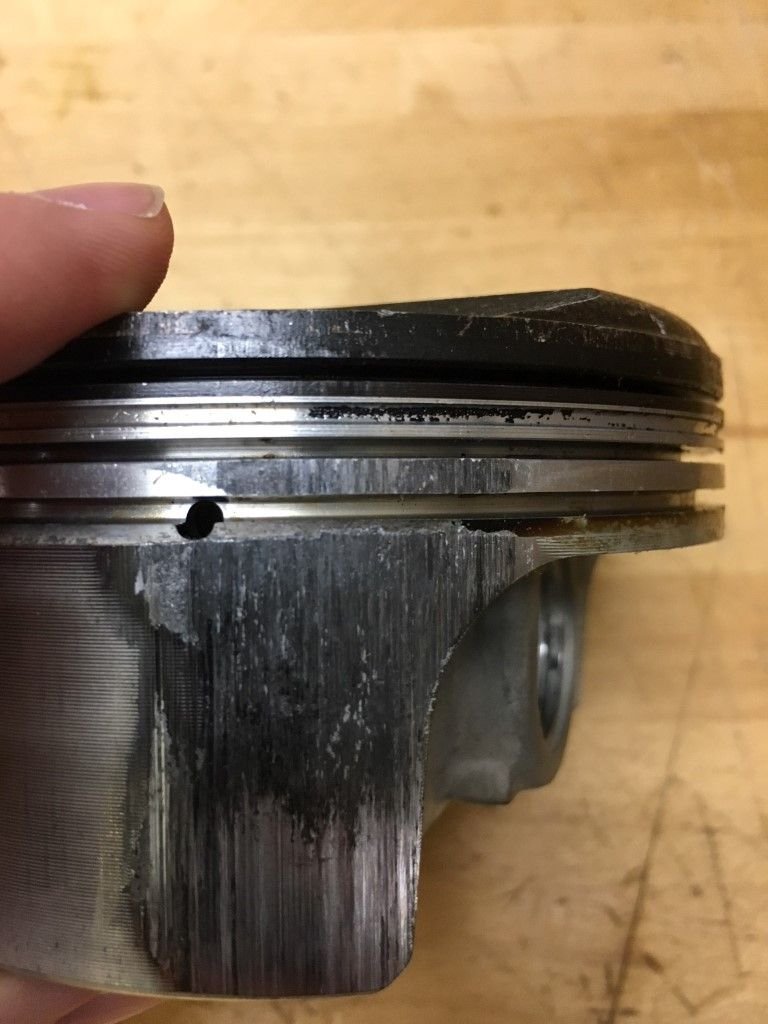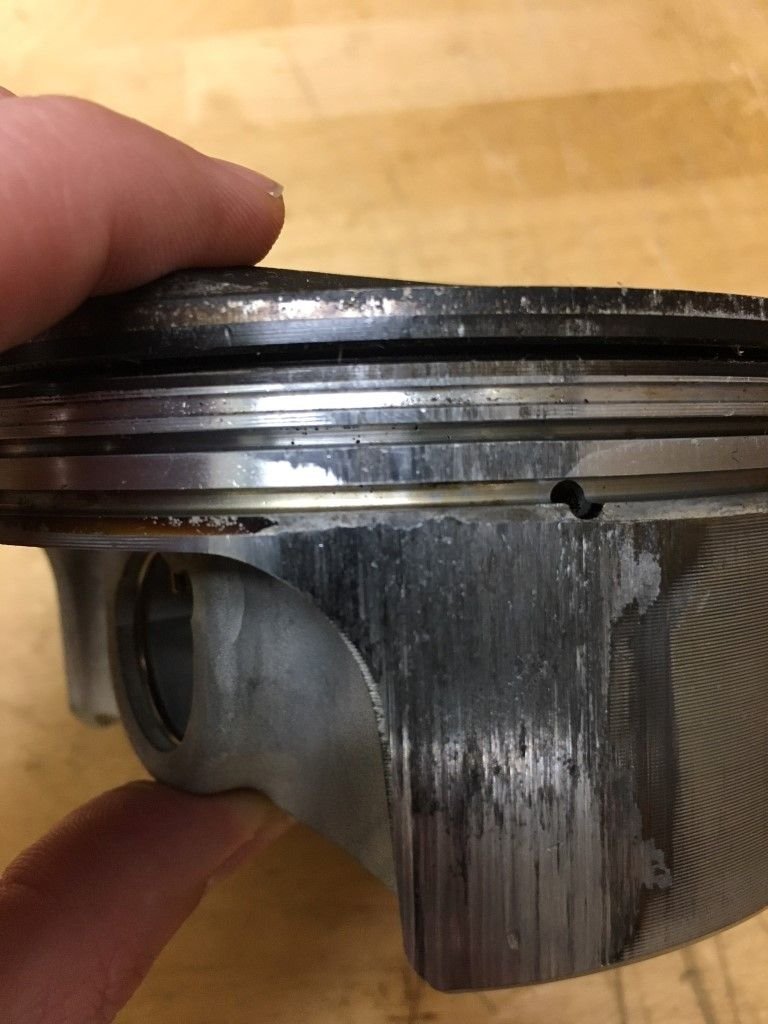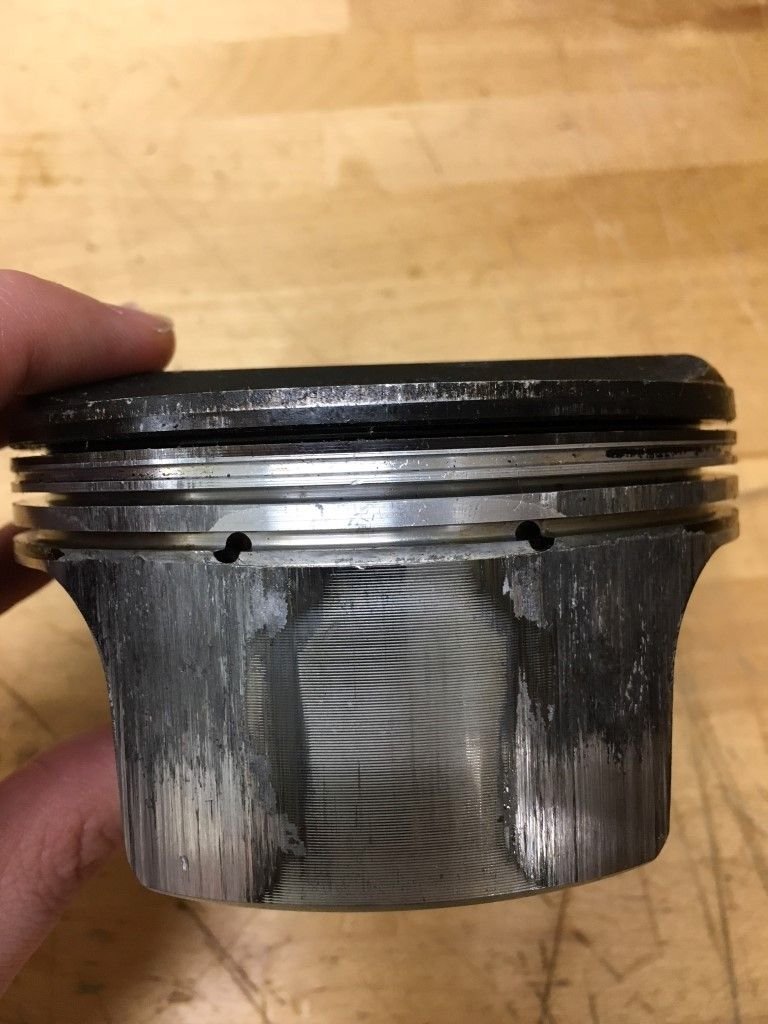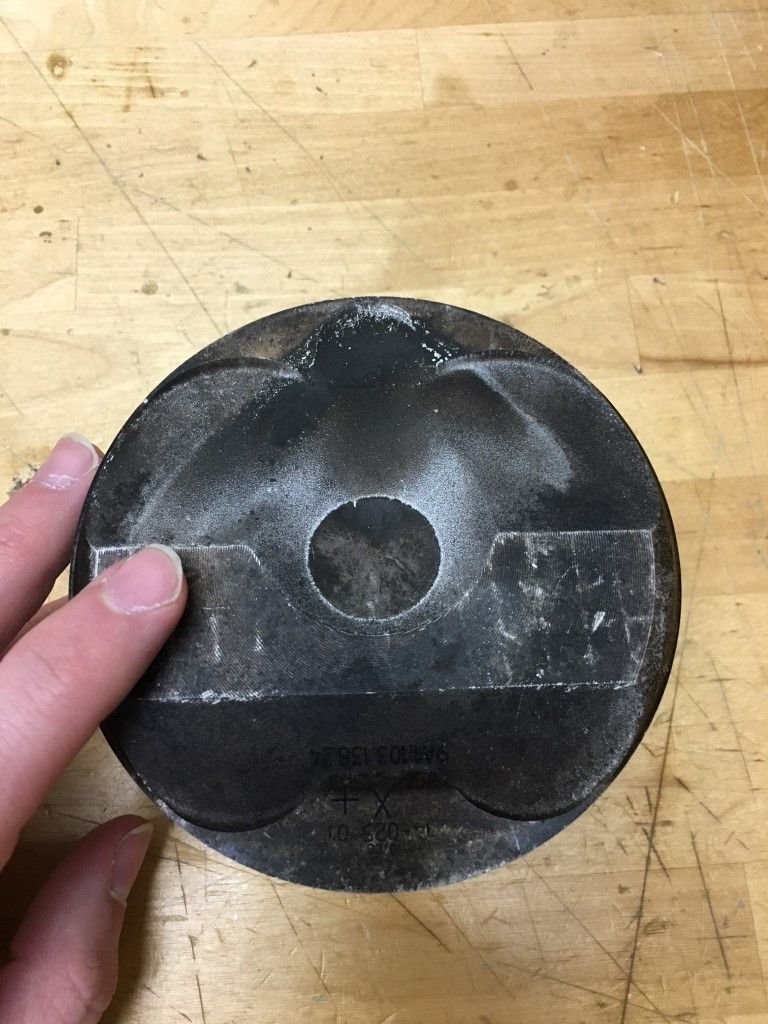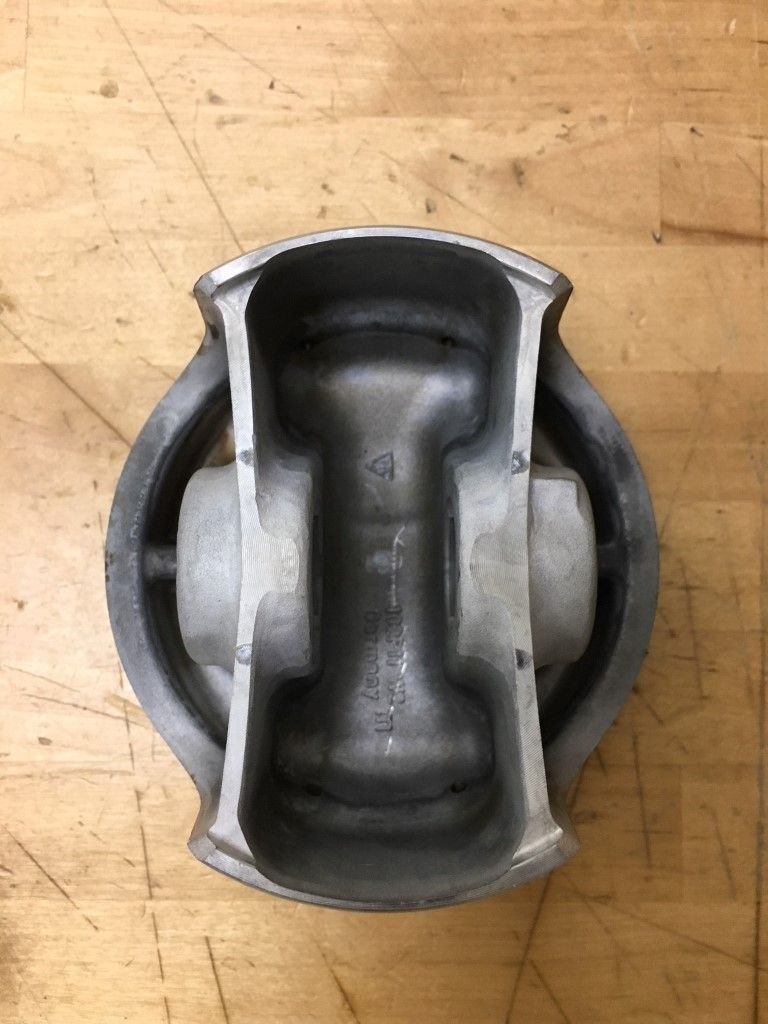997.2 3.8 Engine Failure
#751
Why $350/month? Because you're a sponsor I guess? Either way, I don't blame you for being pissed. You're spending a lot of time here (+ the $350) giving free advice to the entire audience and get crapped on for not doing enough. Anyone who spends some time here knows what you do and knows that your work is second to none so I don't get this sense of entitlement by some for answers to endless questions.
Just me but if I had an issue with my car that I suspected required your toolbox and knowledge, I would contact you in person to discuss rather than wasting your time on the forum. Anything engine related brought up here tends to snowball which I don't need to tell you. All said, I think you've been very patient.
Just me but if I had an issue with my car that I suspected required your toolbox and knowledge, I would contact you in person to discuss rather than wasting your time on the forum. Anything engine related brought up here tends to snowball which I don't need to tell you. All said, I think you've been very patient.
#753
Rennlist Member
Wow!!! I am blown away by the damage to the skirt, almost 360 degrees around and full stroke. How does this much damage occur without some sort of debris, foreign object(s), or total loss of lubrication over an extended time. What would the engine sound like and for how long to sustain this damage? Not pointing fingers or laying blame, just trying to understand what went wrong, how far before the catastrophic failure, and how to prevent it. Could cylinder "shrinkage" inflict this damage so rapidly that there was no way to shut down and prevent further damage.
And, Charles (and Baz and Jake), thank you all for sharing your knowledge and experience. I know many, many of us really appreciate that.
And, Charles (and Baz and Jake), thank you all for sharing your knowledge and experience. I know many, many of us really appreciate that.
#754
Rennlist Member
#755
Instructor
Damn, that is nasty!!
To me it looks like a lot of heat and a significant interference fit between the piston and cylinder. I assume the bore has matching damage?
And maybe mostly happened shortly before the noises were heard as I doubt the piston could continue to sustain the damage much longer. This doesn't look to me to be something that has been happening over a long period as those scratches are deep and not just accelerated normal wear where the piston dimensions have changed more than normal. AND, since I have no data, it is just a wild a$$ guess so more interested in usual as what the experts think
Bill
To me it looks like a lot of heat and a significant interference fit between the piston and cylinder. I assume the bore has matching damage?
And maybe mostly happened shortly before the noises were heard as I doubt the piston could continue to sustain the damage much longer. This doesn't look to me to be something that has been happening over a long period as those scratches are deep and not just accelerated normal wear where the piston dimensions have changed more than normal. AND, since I have no data, it is just a wild a$$ guess so more interested in usual as what the experts think

Bill
Last edited by tinkerbill; 05-07-2019 at 11:06 AM. Reason: .
#756
Rennlist Member
First post!! I would concur with the above. The metal has been brutally pushed up toward the rings, not scuffed both ways. That would point to bottom cylinder clearance that was sudden in nature. This does look like a seize...
I have been tracking on this post. I pulled the trigger on my Bucketlist car in September (09 C4S - hence the username...) and want to make sure I am doing everything I can to keep her healthy!
Mine uses quite a bit of oil. I wonder if that means I don't have to be as concerned about a seize due to larger clearances. I warm her up gently in any case.
I have been tracking on this post. I pulled the trigger on my Bucketlist car in September (09 C4S - hence the username...) and want to make sure I am doing everything I can to keep her healthy!
Mine uses quite a bit of oil. I wonder if that means I don't have to be as concerned about a seize due to larger clearances. I warm her up gently in any case.
#757
Instructor
First post!! I would concur with the above. The metal has been brutally pushed up toward the rings, not scuffed both ways. That would point to bottom cylinder clearance that was sudden in nature. This does look like a seize...
I have been tracking on this post. I pulled the trigger on my Bucketlist car in September (09 C4S - hence the username...) and want to make sure I am doing everything I can to keep her healthy!
Mine uses quite a bit of oil. I wonder if that means I don't have to be as concerned about a seize due to larger clearances. I warm her up gently in any case.
I have been tracking on this post. I pulled the trigger on my Bucketlist car in September (09 C4S - hence the username...) and want to make sure I am doing everything I can to keep her healthy!
Mine uses quite a bit of oil. I wonder if that means I don't have to be as concerned about a seize due to larger clearances. I warm her up gently in any case.
I would be curious to know if there were any events in the cars life in the last few thousand miles like a track day that got the engine significantly over heated or the car ran way low on oil, etc. Did they decide the injector for this cylinder was running lean or was it too damaged to determine its operationality?
Maybe a cylinder bore on the small side of the manufacturing tolerance and a piston on the fat side and a lean injector. Lots of possibilities.
I would find it difficult to believe that Porsche isn't aware of this and working on minimizing this potential problem.
Bill
Last edited by tinkerbill; 05-07-2019 at 04:39 PM. Reason: .
#758
Rennlist Member
I reviewed all the data Baz shared with me. He's drawn many of the same conclusions we have and has done many of the same evaluations we have. Just looking at Bronz's failures alone in a vacuum and not comparing them to any others we have collectively seen, I'd like to just point out to everyone the piston skirt was collapsed by half a MM, as stated in the my post with all the measurements from Bronz's engine. There was too much piston to cylinder clearance and ultimately all that rocking compromised the piston and cylinder, and because of the way the piston skirt is cammed (they are barrel shape), the areas with wear because the high spots. That's my takeaway from this particular engine based on my measurements and research I have been doing on the subject for quite some time now.
Although I agree the piston to cylinder clearances are too tight and I'm sure seizing could occur, in Bronz's case, the Ferroprint coating on the piston is about .0004" thick per side, so .0008" on diameter, and the coating itself can be abraded. The bore in question with scoring is not tighter by more than the skirt coat, so my conclusion is that the piston skirt collapsed first, resulting in the areas with wear to bear the piston side loading at BDC crossover. If the piston had been tight first, the gauge point, which shows no wear on the piston, would have shown some sign of wear, which it didn't.
Not to discount what Baz has seen in the failures he's witnessed as I agree with him that our sample size is too small to rule out that we don't have three distinct failure modes (seizing, scoring, collapsed skirt), but I believe that the added loads imparted by the piston on the cylinder bore compromised the silicon particles that support the piston, fracturing and folding them over into the aluminum matrix that supports the silicon particles. When this happens, the bore looses its Si peaks and with that, areas where the oil film fills in the valleys between Si particles. This is measured as a reduction in the RpK of the cylinder, which I noted there was one cylinder that appeared to be starting to score and it was very, very smooth, as indicated with the low RpK value, below what is needed to maintain the required tribofilm.
And no, I did not just make this up. This is how Alusil wears and is normal. Its called UMW or ultra mild wear regime. There are lots of things going on here with tribofilms (hence the importance of the oil used and its composition). I have stacks of research papers I have purchased from various sources that I have read to try to wrap my head around how this occurs and what we can possibly do to stop it.
Research shows that the strength of these wear films are directly dependent on the presence of ZDDP and Moly in the oil. ZDDP binds to the Si particles and the Moly to the Aluminum. An oil that uses milder detergents (that preserve these wear films) and has added ZDDP and Moly would help reduce wear and extend the normal UMW cycle experienced by Alusil or any other hypereutectic cylinders or blocks.
The size and distribution of these Si particles affects the wear performance and as there are many variables in the manufacture of the engine block, including whether or not every block was finished the same or if they even tested every single block or bore during production, as it's typical for manufacturers to pull samples at random to check rather than check 100%.
I am currently testing Ceratec to see exactly what is in it to see if indeed the Cayenne people are onto something, as they swear by it, with regards to preventing scoring. Likewise, Lake Speed Jr. has formulated for us an additive to boost Driven street oils up closer to the levels seen in their race oils, which I have yet to run, but based off the research I have seen, I believe Moly is the key.
Typical ACEA oils meeting the A40 spec have near zero moly. A typical API SN rated oil has around 50ppm of moly. For comparison, DT40 is in the 600 ppm range and DI40 is in the 300 ppm range (it has less because of formulation differences due to reduced Ca detergents to mitigate LSPI). The ratio of moly to detergency is key.
Although I agree the piston to cylinder clearances are too tight and I'm sure seizing could occur, in Bronz's case, the Ferroprint coating on the piston is about .0004" thick per side, so .0008" on diameter, and the coating itself can be abraded. The bore in question with scoring is not tighter by more than the skirt coat, so my conclusion is that the piston skirt collapsed first, resulting in the areas with wear to bear the piston side loading at BDC crossover. If the piston had been tight first, the gauge point, which shows no wear on the piston, would have shown some sign of wear, which it didn't.
Not to discount what Baz has seen in the failures he's witnessed as I agree with him that our sample size is too small to rule out that we don't have three distinct failure modes (seizing, scoring, collapsed skirt), but I believe that the added loads imparted by the piston on the cylinder bore compromised the silicon particles that support the piston, fracturing and folding them over into the aluminum matrix that supports the silicon particles. When this happens, the bore looses its Si peaks and with that, areas where the oil film fills in the valleys between Si particles. This is measured as a reduction in the RpK of the cylinder, which I noted there was one cylinder that appeared to be starting to score and it was very, very smooth, as indicated with the low RpK value, below what is needed to maintain the required tribofilm.
And no, I did not just make this up. This is how Alusil wears and is normal. Its called UMW or ultra mild wear regime. There are lots of things going on here with tribofilms (hence the importance of the oil used and its composition). I have stacks of research papers I have purchased from various sources that I have read to try to wrap my head around how this occurs and what we can possibly do to stop it.
Research shows that the strength of these wear films are directly dependent on the presence of ZDDP and Moly in the oil. ZDDP binds to the Si particles and the Moly to the Aluminum. An oil that uses milder detergents (that preserve these wear films) and has added ZDDP and Moly would help reduce wear and extend the normal UMW cycle experienced by Alusil or any other hypereutectic cylinders or blocks.
The size and distribution of these Si particles affects the wear performance and as there are many variables in the manufacture of the engine block, including whether or not every block was finished the same or if they even tested every single block or bore during production, as it's typical for manufacturers to pull samples at random to check rather than check 100%.
I am currently testing Ceratec to see exactly what is in it to see if indeed the Cayenne people are onto something, as they swear by it, with regards to preventing scoring. Likewise, Lake Speed Jr. has formulated for us an additive to boost Driven street oils up closer to the levels seen in their race oils, which I have yet to run, but based off the research I have seen, I believe Moly is the key.
Typical ACEA oils meeting the A40 spec have near zero moly. A typical API SN rated oil has around 50ppm of moly. For comparison, DT40 is in the 600 ppm range and DI40 is in the 300 ppm range (it has less because of formulation differences due to reduced Ca detergents to mitigate LSPI). The ratio of moly to detergency is key.
#759
RL Community Team
Rennlist Member
Rennlist Member
I reviewed all the data Baz shared with me. He's drawn many of the same conclusions we have and has done many of the same evaluations we have. Just looking at Bronz's failures alone in a vacuum and not comparing them to any others we have collectively seen, I'd like to just point out to everyone the piston skirt was collapsed by half a MM, as stated in the my post with all the measurements from Bronz's engine. There was too much piston to cylinder clearance and ultimately all that rocking compromised the piston and cylinder, and because of the way the piston skirt is cammed (they are barrel shape), the areas with wear because the high spots. That's my takeaway from this particular engine based on my measurements and research I have been doing on the subject for quite some time now.
Although I agree the piston to cylinder clearances are too tight and I'm sure seizing could occur, in Bronz's case, the Ferroprint coating on the piston is about .0004" thick per side, so .0008" on diameter, and the coating itself can be abraded. The bore in question with scoring is not tighter by more than the skirt coat, so my conclusion is that the piston skirt collapsed first, resulting in the areas with wear to bear the piston side loading at BDC crossover. If the piston had been tight first, the gauge point, which shows no wear on the piston, would have shown some sign of wear, which it didn't.
Not to discount what Baz has seen in the failures he's witnessed as I agree with him that our sample size is too small to rule out that we don't have three distinct failure modes (seizing, scoring, collapsed skirt), but I believe that the added loads imparted by the piston on the cylinder bore compromised the silicon particles that support the piston, fracturing and folding them over into the aluminum matrix that supports the silicon particles. When this happens, the bore looses its Si peaks and with that, areas where the oil film fills in the valleys between Si particles. This is measured as a reduction in the RpK of the cylinder, which I noted there was one cylinder that appeared to be starting to score and it was very, very smooth, as indicated with the low RpK value, below what is needed to maintain the required tribofilm.
And no, I did not just make this up. This is how Alusil wears and is normal. Its called UMW or ultra mild wear regime. There are lots of things going on here with tribofilms (hence the importance of the oil used and its composition). I have stacks of research papers I have purchased from various sources that I have read to try to wrap my head around how this occurs and what we can possibly do to stop it.
Research shows that the strength of these wear films are directly dependent on the presence of ZDDP and Moly in the oil. ZDDP binds to the Si particles and the Moly to the Aluminum. An oil that uses milder detergents (that preserve these wear films) and has added ZDDP and Moly would help reduce wear and extend the normal UMW cycle experienced by Alusil or any other hypereutectic cylinders or blocks.
The size and distribution of these Si particles affects the wear performance and as there are many variables in the manufacture of the engine block, including whether or not every block was finished the same or if they even tested every single block or bore during production, as it's typical for manufacturers to pull samples at random to check rather than check 100%.
I am currently testing Ceratec to see exactly what is in it to see if indeed the Cayenne people are onto something, as they swear by it, with regards to preventing scoring. Likewise, Lake Speed Jr. has formulated for us an additive to boost Driven street oils up closer to the levels seen in their race oils, which I have yet to run, but based off the research I have seen, I believe Moly is the key.
Typical ACEA oils meeting the A40 spec have near zero moly. A typical API SN rated oil has around 50ppm of moly. For comparison, DT40 is in the 600 ppm range and DI40 is in the 300 ppm range (it has less because of formulation differences due to reduced Ca detergents to mitigate LSPI). The ratio of moly to detergency is key.
Although I agree the piston to cylinder clearances are too tight and I'm sure seizing could occur, in Bronz's case, the Ferroprint coating on the piston is about .0004" thick per side, so .0008" on diameter, and the coating itself can be abraded. The bore in question with scoring is not tighter by more than the skirt coat, so my conclusion is that the piston skirt collapsed first, resulting in the areas with wear to bear the piston side loading at BDC crossover. If the piston had been tight first, the gauge point, which shows no wear on the piston, would have shown some sign of wear, which it didn't.
Not to discount what Baz has seen in the failures he's witnessed as I agree with him that our sample size is too small to rule out that we don't have three distinct failure modes (seizing, scoring, collapsed skirt), but I believe that the added loads imparted by the piston on the cylinder bore compromised the silicon particles that support the piston, fracturing and folding them over into the aluminum matrix that supports the silicon particles. When this happens, the bore looses its Si peaks and with that, areas where the oil film fills in the valleys between Si particles. This is measured as a reduction in the RpK of the cylinder, which I noted there was one cylinder that appeared to be starting to score and it was very, very smooth, as indicated with the low RpK value, below what is needed to maintain the required tribofilm.
And no, I did not just make this up. This is how Alusil wears and is normal. Its called UMW or ultra mild wear regime. There are lots of things going on here with tribofilms (hence the importance of the oil used and its composition). I have stacks of research papers I have purchased from various sources that I have read to try to wrap my head around how this occurs and what we can possibly do to stop it.
Research shows that the strength of these wear films are directly dependent on the presence of ZDDP and Moly in the oil. ZDDP binds to the Si particles and the Moly to the Aluminum. An oil that uses milder detergents (that preserve these wear films) and has added ZDDP and Moly would help reduce wear and extend the normal UMW cycle experienced by Alusil or any other hypereutectic cylinders or blocks.
The size and distribution of these Si particles affects the wear performance and as there are many variables in the manufacture of the engine block, including whether or not every block was finished the same or if they even tested every single block or bore during production, as it's typical for manufacturers to pull samples at random to check rather than check 100%.
I am currently testing Ceratec to see exactly what is in it to see if indeed the Cayenne people are onto something, as they swear by it, with regards to preventing scoring. Likewise, Lake Speed Jr. has formulated for us an additive to boost Driven street oils up closer to the levels seen in their race oils, which I have yet to run, but based off the research I have seen, I believe Moly is the key.
Typical ACEA oils meeting the A40 spec have near zero moly. A typical API SN rated oil has around 50ppm of moly. For comparison, DT40 is in the 600 ppm range and DI40 is in the 300 ppm range (it has less because of formulation differences due to reduced Ca detergents to mitigate LSPI). The ratio of moly to detergency is key.
Driven AT3 in my Cayenne Transfer Case,
Driven LS75W-90 Gear Oil in my Cayenne Differentials and in the Z06 LS 6-speed that's in my supercharged 928
#760
Nordschleife Master
I have been using Liqui Moly Ceratec and MoS2 in multiple engines along with appropriate Liqui Moly motor oil. Could not be happier.
#761
Rennlist Member
If you are going to run Ceratec, that's the way to do it. I've seen a few threads on Rennlist and FB that people are running the Ceratec with other brands of oil. I'd recommend against that as you might have additive clash.
#762
Nordschleife Master
Incidentally, Ceratec is a long mileage treatment, perhaps 25k miles. That means that once Ceratec is applied it does not need to be used with every subsequent oil change - I use MoS2 for those.
#763
Instructor
Great post Charles. I'm very interested in your Ceratec research as I don't normally believe in introducing a foreign substance into the homogeneous oil fill, but there do seem to be some good anecdotal results with Ceratec, so I'd like to see some scientific results to back those up before I'll start using it myself. A similar formulation from Driven that's compatible with and tested with their base stocks would be great, especially one that could go into transmissions, differentials, as well as the motor oil (or a couple of different ones if that's what it takes) as I run their:
Driven AT3 in my Cayenne Transfer Case,
Driven LS75W-90 Gear Oil in my Cayenne Differentials and in the Z06 LS 6-speed that's in my supercharged 928
Driven AT3 in my Cayenne Transfer Case,
Driven LS75W-90 Gear Oil in my Cayenne Differentials and in the Z06 LS 6-speed that's in my supercharged 928
I'm not completely convinced that these scoring problems are preventable after the engine is assembled. I'm sure Porsche has quality targets although I don't know if it is a 3,4,5 or 6 Sigma program. Whatever it is, there is a failure rate for all components and assemblies and in this case, sadly, it may be many miles after purchase before the failure reveals itself.
Bill
#764
Rennlist Member
Thanks Charles for the info. In your opinion, would a car that uses a lot of oil be too "loose" as the saying goes and be subject to the kind of failure we are seeing here?
Also as for oil, since I live in CA and need to have working cat converters, is there any risk of killing the cat's using some of the lubricants above? I have heard too much zinc can cause premature end of life for cat converters. I know moly isn't the same, just asking.
Thanks for the info.
Kevin
Also as for oil, since I live in CA and need to have working cat converters, is there any risk of killing the cat's using some of the lubricants above? I have heard too much zinc can cause premature end of life for cat converters. I know moly isn't the same, just asking.
Thanks for the info.
Kevin
#765
RL Community Team
Rennlist Member
Rennlist Member
Thanks Charles for the info. In your opinion, would a car that uses a lot of oil be too "loose" as the saying goes and be subject to the kind of failure we are seeing here?
Also as for oil, since I live in CA and need to have working cat converters, is there any risk of killing the cat's using some of the lubricants above? I have heard too much zinc can cause premature end of life for cat converters. I know moly isn't the same, just asking.
Thanks for the info.
Kevin
Also as for oil, since I live in CA and need to have working cat converters, is there any risk of killing the cat's using some of the lubricants above? I have heard too much zinc can cause premature end of life for cat converters. I know moly isn't the same, just asking.
Thanks for the info.
Kevin




